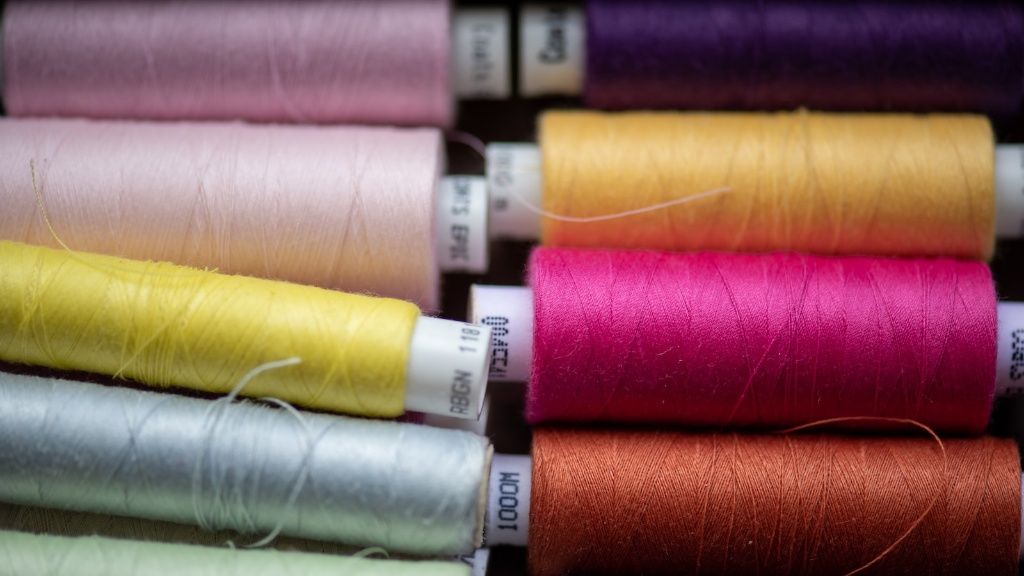Are you having trouble fixing the tension on your sewing machine? It can be a tricky skill to master, but don’t worry – with the right advice and guidance you can get it right. Learning to fix tension on your sewing machine is an essential skill to have if you want to create beautiful, quality projects. It should also be noted that sewing machine tension is different from thread tension. Thread tension can also be adjusted, but it is not usually necessary.
To begin, make sure your fabrics are ironed, you have the correct size needle for the fabric, and that the bobbin is correctly threaded. When you are sewing and you start to see loops or skipped stitches, you will need to adjust the tension on your sewing machine. If the loop is on the underside of the fabric, the tension needs to be increased. If the loop is on the top of the fabric, then the tension needs to be decreased. An easy way to make sure the tension is correct is to hold the top and bottom threads up, they should look like they match up.
If the tension is too tight, the fabric will pucker and make the thread birdnest. This is when the thread wraps around the needle plate. To loosen the tension, loosen the top tension disc on the machine. Alternatively, if the tension is too loose, the stitches will be on the underside of the fabric, making the threads weak and your stitches uneven. To tighten the tension in such cases, just tighten the top tension disc on the machine.
Using the right size needle for the fabric is also important. A thin needle is for thin fabrics like silks and light weight fabrics, and a heavy needle is for thicker fabrics like denim and canvas. The wrong needle will break quickly, and the threads may also break under the pressure, which will cause the tension to be out of balance. Make sure to use the correct needle for the best results.
It is also important to check the machine settings prior to adjusting the tension. Make sure the presser foot is down, the thread spool is secure, the needle is threaded correctly, and that the stitch length is correct. If all these settings are right, the tension should be balanced and the threads should lay flat.
Investigative methods
When fixing tension issues, professional seamstresses may use investigative methods such as loopers and tension discs. Loopers help you to assess which thread needs to be adjusted by threading the top and bottom threads onto the loopers. By pulling the threads away from each other, it will become clear which thread needs to be adjusted. Tension discs help you determine the right amount of tension when sewing. The discs measure the amount of tension being put on the thread, and the numbers can be adjusted accordingly.
Understanding needles
Needles are also a major component of tension. Needles come in many varieties, from very thin to very thick. The thickness of the needle will help determine how much tension needs to be applied to your threads. A thick needle should be paired with thicker threads and a larger tension setting, while a thin needle should be paired with thinner threads and a smaller tension setting. It is important to use the correct size needle and thread for best results.
Testing the tensions
Once the tensions have been adjusted, the best way to test the results is to do a few test runs on scrap fabric. This will ensure that the tension is balanced and the threads are laying flat. If the test runs give you the desired results, then you are ready to go. Otherwise, keep adjusting the tensions until you get the results you need.
More adjustments
Threading the bobbin is also an important part of fixing the tension. Make sure your bobbin is properly threaded, making sure the threads are in the right direction, securely fastened to the machine, and that the bobbin is in the correct position. This will help ensure that the tensions remain in balance.
Keeping the tensions even
It is important to keep the tensions even when sewing, as this will help ensure that the stitches are even, the thread doesn’t tangle, and the fabric does not bunch. Make sure to check the tensions regularly throughout your project – this will help to keep the tensions even, as well as prevent any skipped stitches or birdnesting.
Regular Maintenance
Regular maintenance is also key to keeping the tension on your sewing machine in balance. Clean your machine regularly and inspect it for any worn or damaged parts. This will help ensure that your sewing machine is running properly and that the tensions remain in balance.
Conclusion
Fixing the tension on your sewing machine is not as difficult as it may seem, but it does require a bit of patience and practice. With the right advice and guidance, anyone can learn how to adjust sewing machine tension to get the results they desire. Make sure to keep the tensions balanced throughout your project and clean your machine regularly for best results.



